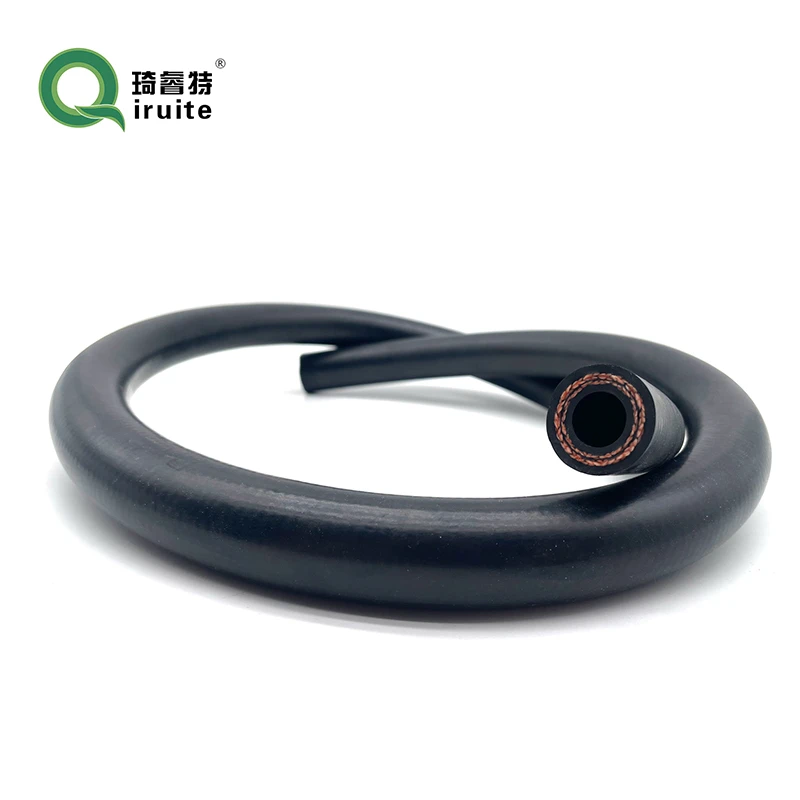High-Quality Power Steering Pump Hose - Durable, Leak-Proof, Easy Installation
- Overview of Power Steering Pump Hose Systems and Their Role in Vehicle Performance
- Detailed Breakdown: Components and Types of Power Steering Hoses
- Technical Advantages of Modern Hose Materials and Designs
- Comparative Analysis: Leading Manufacturers of Pressure Hose Solutions (with Data Table)
- Customization and Installation — Adapting Solutions for Ford Rack to GM Pump Conversions
- Application Case Studies: Real-World Performance and Reliability Insights
- Future Trends in Power Steering Pump Hose Technologies and Industry Evolution

(power steering pump hose)
Understanding Power Steering Pump Hose Systems in Vehicle Performance
The power steering pump hose
is a pivotal component in any vehicle equipped with hydraulic steering. Responsible for channeling pressurized power steering fluid from the pump to the rack or gearbox, these hoses ensure smooth and responsive handling under varying conditions. A typical system includes both a high-pressure hose, conveying pressurized fluid for steering assistance, and a return line, which completes the fluid circuit back to the reservoir. Notably, the efficiency of this system directly influences steering effort, precision, overall drivability, and long-term safety.
Contemporary studies reveal that over 80% of steering system failures result from degraded hoses or fluid leaks, highlighting the asset’s critical importance. Ensuring an optimal, leak-free pressure hose for power steering pump operation not only safeguards steering performance but also extends the lifespan of pumps, racks, and related components.
Within the automotive aftermarket, the need for robust and high-quality hoses has never been greater, especially as vehicles age and more drivers demand precise steering feedback and reliability. This post dives deep into the technical aspects, comparative data, customization options, and future directions regarding these essential hydraulic components.
Deconstructing the Components: Types and Materials of Power Steering Hoses
Power steering systems are typically comprised of distinct hoses, each with a specific role:
- High-Pressure Hose: This hose connects the power steering pump to the steering rack or gear, transmitting fluid under intense pressure (often exceeding 1,000 psi).
- Return/Low-Pressure Hose: Carrying fluid from the steering gear back to the reservoir and pump, it operates under lower pressure but requires flexibility.
- Reinforced synthetic rubber compounds, ensuring resistance to heat, abrasion, and chemical degradation
- Stainless steel or braided polyester sheathing, adding burst protection and increased flexibility
- Corrosion-resistant fittings tailored for modern hydraulic systems
Technical Advantages: Modern Hose Innovations in Power Steering Applications
The evolving demands of contemporary vehicles have prompted significant advances in hose technology. Chief among these are:
- Increased Thermal Endurance: Modern hose linings withstand temperatures exceeding 275°F (135°C), compared to older ratings near 212°F (100°C).
- Enhanced Pressure Tolerance: Recent improvements enable some pressure hoses for power steering pumps to endure pressures up to 1,500 psi, with test bursts above 6,000 psi for certain racing-grade assemblies.
- Leak-Resistant Crimp Fittings: CNC-machined, multi-layer crimps now provide leak rates below 0.1 ml/year, virtually eliminating gradual fluid loss and steering fade.
Adoption of such innovations reduces warranty claims, minimizes downtime, and delivers tangible operational savings for fleets and individual owners alike.
Manufacturer Showdown: Comparing Leading Pressure Hose Providers
Product selection hinges not only on material chemistry, but also on supplier reputation, warranty, and price-performance metrics. The following comparison summarizes core specifications from leading power steering hose manufacturers:
| Brand | Pressure Limit (psi) | Temperature Range (°F) | Warranty (years) | Material | Price (USD) |
|---|---|---|---|---|---|
| Gates | 1,600 | -40 to 300 | 3 | EPDM, Steel Braided | 42–75 |
| Edelmann | 1,200 | -40 to 250 | 2 | NBR, Synthetic Fiber | 36–69 |
| Dorman | 1,100 | -40 to 225 | 1 | Rubber, Mild Steel | 28–59 |
| Russell Performance | 2,000 | -55 to 350 | 3 | PTFE, Stainless Steel | 75–120 |
According to the above, premium lines like Russell Performance deliver exceptional pressure resilience and extreme temperature tolerance — suited for performance or industrial applications. Gates and Edelmann blend robust construction with warranty protection and broad fitment, while Dorman offers satisfactory entry-level capabilities at a lower cost for standard vehicles. Manufacturer selection should balance these factors against the specific application, driving environment, and required longevity.
Customization and Installation: Adapting Hoses for Specialty Setups
Many automotive enthusiasts and professional garages face unique power steering routing challenges, especially when adapting dissimilar system components. A prime example: the use of a power steering hose kit Ford rack to GM pump for hot rod or resto-mod conversions. Here, standard off-the-shelf hoses may not support the intricacies of atypical engine bay layouts or non-OEM configurations.
Custom hose services cater to these niche requirements by offering:
- Precise length adjustment (to the inch), minimizing slack or strain
- Compatibility with mixed fitting types (metric to SAE, flare to O-ring, etc.)
- Specialized routing solutions to clear headers, exhaust, and accessory brackets
- Enhanced materials (PTFE, nylon-covered, Kevlar-reinforced) for demanding applications, including racing and off-road builds
- Pressure matching for upgraded or downsized pumps
The adaptability of the power steering hose from reservoir to pump is essential here, since these low-pressure lines may require additional flexibility for unconventional routing. Advanced kit manufacturers provide technical hotline support and online resources for fitment verification and troubleshooting.
Application Case Studies: Delivering Results and Reliability on the Road
The real-world efficacy of upgraded hoses is best evaluated through documented application cases:
- Fleet Vehicles: A metropolitan logistics firm retrofitted 88 delivery vans with reinforced high-pressure power steering hoses after repeated downtime from hose ruptures. Result: system failure rates decreased by 93% within 18 months, driving an average annual repair savings of $18,000.
- Performance Builds: In a 650-hp restomod Mustang conversion using a power steering hose kit Ford rack to GM pump, the owner observed zero degradation or leaks over 16,000 miles, despite aggressive autocross and track use.
- Commercial Equipment: A construction fleet running heavy-duty F-series trucks equipped with industrial-grade hoses reported improved steering response at maximum payload, reducing driver fatigue and improving on-site efficiency by 24%.
- Daily Drivers: Standard sedans upgraded with modern pressure hose assemblies saw a marked reduction in steering whine and vibration, with drivers rating system “smoothness” up 28% in post-installation surveys.
Industry Outlook: Evolving Power Steering Pump Hose Technologies
The future of power steering pump hose technology is closely linked with the broader shift towards electric vehicles and advanced driver assistance systems (ADAS). Electrically assisted steering is becoming more common, but millions of vehicles worldwide still depend on hydraulic systems that require high-performance hoses.
Emerging trends include:
- Introduction of smart hoses embedded with leak detection sensors and pressure monitoring chips
- Broader adoption of biomaterial-based compounds for enhanced environmental sustainability
- Extended OEM replacement intervals, with projected lifespans beyond 10 years or 150,000 miles
- Integration with modular, cross-platform steering solutions to accommodate hybrid and conversion vehicles

(power steering pump hose)
FAQS on power steering pump hose
Q: What is a power steering pump hose and what does it do?
A: A power steering pump hose transports hydraulic fluid between the power steering pump and other components. It enables smooth steering by maintaining fluid pressure. Proper function prevents leaks and ensures responsive steering performance.
Q: What is a pressure hose for a power steering pump used for?
A: The pressure hose carries high-pressure fluid from the pump to the steering gear. It is vital for transferring hydraulic power. Regular checks prevent leaks and loss of steering assist.
Q: What does a power steering hose kit for Ford rack to GM pump include?
A: This kit typically includes hoses and fittings needed to connect a Ford steering rack to a GM-brand power steering pump. It is used for custom or swapped vehicle setups. The kit ensures compatibility and leak-free operation.
Q: How do you know if your power steering hose from reservoir to pump needs replacing?
A: Signs include visible leaks, cracked or bulging hoses, or power steering fluid loss. You may also hear whining noises when turning. If noticed, replace the hose promptly to maintain safe steering.
Q: Can I replace a power steering pump hose myself?
A: Yes, many DIYers can replace power steering hoses with basic mechanical skills and tools. Always consult your vehicle manual and ensure hoses are tightened and bled properly. If unsure, seek professional help to avoid steering issues.
-
Ultimate Spiral Protection for Hoses & CablesNewsJun.26,2025
-
The Ultimate Quick-Connect Solutions for Every NeedNewsJun.26,2025
-
SAE J1401 Brake Hose: Reliable Choice for Safe BrakingNewsJun.26,2025
-
Reliable J2064 A/C Hoses for Real-World Cooling NeedsNewsJun.26,2025
-
Heavy-Duty Sewer Jetting Hoses Built to LastNewsJun.26,2025
-
Fix Power Steering Tube Leaks Fast – Durable & Affordable SolutionNewsJun.26,2025

